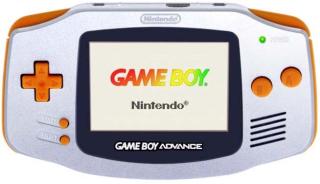
Big Nintendo buddies and Mario Tennis developers the Takahashi brothers of Camelot Games take a break from their busy schedule of developing massive RPGs for GameCube to reflect on the Game Boy Advance.
In an interview with Core magazine, the pair made some pretty bold statements regarding Nintendo’s new pocket wonder and their intentions for it.
"If I had to sum it up in one word, I'd say it's impactful,” said Takahashi-san. “The Game Boy Advance hardware exemplifies the same leap in technology from the Super Famicom to the PlayStation in the console market. It also has its own identity, as a developer we don't feel as if we're just working on an upgraded Game Boy, the Game Boy Advance is entirely new." Summing up a new console using one word that doesn’t really exist is forgivable. We know what you mean!
When asked if there were any problems when programming for the machine they said: “There's still the problem of limited space using ROM cartridges. In the days of the Super Famicom we found ourselves using 32 MB or 64 MB cartridges depending upon the size of the game. In reality, the theoretical limit was 256 MB, but it wasn't cost effective to use ROMs that big. On the Game Boy Advance you need the skill of working on higher-end consoles such as the PlayStation, and the technical background of developing for ROM-based systems. It will be a long time before the Game Boy Advance hardware is fully exploited.”
Then the $64,000 question. How far away are we from realising full 3D graphics on the machine? "It's possible to do 3D on the Game Boy Advance, but you run into problems. There are no 3D libraries available like on the Nintendo 64, but if someone made them, it could be done. There are still memory and CPU limitations, but once those issues are worked out, 3D will become a reality on the Game Boy Advance in the future. Graphically the system looks very good, like all handheld machines though, it has its idiosyncrasies. Unless these issues are addressed, you can have problems such as the graphics looking too dark onscreen. The sound capabilities are good also, although you still have to work around the storage issue. It can play back digitised samples, but that takes up memory that could otherwise be used for graphics. In our first Game Boy Advance project 'Oukon no Taiyou,' graphics take precedence over sound, but we're looking for a delicate balance.”
In an interview with Core magazine, the pair made some pretty bold statements regarding Nintendo’s new pocket wonder and their intentions for it.
"If I had to sum it up in one word, I'd say it's impactful,” said Takahashi-san. “The Game Boy Advance hardware exemplifies the same leap in technology from the Super Famicom to the PlayStation in the console market. It also has its own identity, as a developer we don't feel as if we're just working on an upgraded Game Boy, the Game Boy Advance is entirely new." Summing up a new console using one word that doesn’t really exist is forgivable. We know what you mean!
When asked if there were any problems when programming for the machine they said: “There's still the problem of limited space using ROM cartridges. In the days of the Super Famicom we found ourselves using 32 MB or 64 MB cartridges depending upon the size of the game. In reality, the theoretical limit was 256 MB, but it wasn't cost effective to use ROMs that big. On the Game Boy Advance you need the skill of working on higher-end consoles such as the PlayStation, and the technical background of developing for ROM-based systems. It will be a long time before the Game Boy Advance hardware is fully exploited.”
Then the $64,000 question. How far away are we from realising full 3D graphics on the machine? "It's possible to do 3D on the Game Boy Advance, but you run into problems. There are no 3D libraries available like on the Nintendo 64, but if someone made them, it could be done. There are still memory and CPU limitations, but once those issues are worked out, 3D will become a reality on the Game Boy Advance in the future. Graphically the system looks very good, like all handheld machines though, it has its idiosyncrasies. Unless these issues are addressed, you can have problems such as the graphics looking too dark onscreen. The sound capabilities are good also, although you still have to work around the storage issue. It can play back digitised samples, but that takes up memory that could otherwise be used for graphics. In our first Game Boy Advance project 'Oukon no Taiyou,' graphics take precedence over sound, but we're looking for a delicate balance.”
Read More Like This
